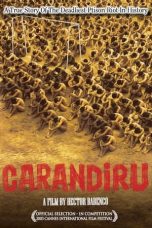- 1
- 2
- Source: Chitral (princely state)
Animalia (2023)
Knives Out (2019)
Horizon: An American Saga – Chapter 1 (2024)
Mission: Impossible – Ghost Protocol (2011)
Civil War (2024)
Tatami (2024)
Wake Up (2024)
Star Trek Into Darkness (2013)
Carandiru (2003)
A Clockwork Orange (1971)
Sicario: Day of the Soldado (2018)
Theater Camp (2023)
Reagan (2024)
The Spiderwick Chronicles (2008)
American Sniper (2014)
No More Posts Available.
No more pages to load.
Chitral or Chitrāl (Persian: چترال) was a princely state in alliance with British India until 1947, then a princely state of Pakistan until 1972. The area of the state now forms the Upper and Lower Chitral Districts of the Khyber Pakhtunkhwa, Pakistan.
During the reign of Mehtar Aman ul-Mulk, the dynasty's sway extended from Asmar in the Kunar Valley of Afghanistan to Punial in the Gilgit Valley. The entire region that now forms the Chitral District was a fully independent monarchy until 1885, when the British negotiated a subsidiary alliance with its hereditary ruler, the Mehtar, under which Chitral became a princely state, still sovereign but subject to the suzerainty of the British Indian Empire. In 1895 the British agent in Gilgit, Sir George Scott Robertson was besieged in Chitral Fort for 48 days, and was finally relieved by two British Forces, one marching from Gilgit and the other from Nowshera. After 1895, the British hold became stronger, but the internal administration remained in the hand of the Mehtar. In 1947 India was partitioned and Chitral opted to accede to Pakistan. After accession, it finally became an administrative district of Pakistan in 1972.
History
Since the early 19th century, local chroniclers have been documenting the history of Chitral and are considered the main source on the subject. The Nai Tarikh-i-Chitral, written by Ghulam Murtaza, son of the historian at the court of Aman-ul-Mulk, the ruler of Chitral during the British period, has come to be seen as the official historiography of Chitral, and is largely accepted by international scholarship. However, it has been criticized on weak chronologigal ground, as it traces back the advent of Islam in Chitral around the 7th century, and sought to legitimize the Kator rule by anticipating its beginning.
According to the account, the history of Chitral is divided into three main periods: the Kafir period, the Rais period, and the Kator period. It describes the arrival of Islam in Chitral in the 7th century by an Arab army that defeated a local king named Bahman Kohistani. After a gap of five centuries, it describes upper Chitral under Sumalik of the Trakhane dynasty, which supposedly ruled Gilgit, while lower Chitral was ruled by Kalasha rulers Bulasing and Rajawai. The Kafir period came to an end in 1320 accordingly, when a foreign chief named Shah Nadir Rais, presumably from Turkestan, arrived and founded the Raisa rule, which lasted from 1531 to 1574. Shah Nasir is described as the eighth of nine Rais rulers. They were ousted by Mohtaram Shah Kator, who reigned from 1595 to 1630, ending the rule due to a Rais backlash that brought Shah Mahmud Rais, the son of Shah Nasir, to the throne. The defeat of Shah Mahmud by Mohtaram’s son Sangin Ali II in 1660 marks the final establishment of the Kator dynasty, which lasted until modern times.
Wolfgang Holzwarth conducted a recent investigation that challenges the account's reconstruction of the Rais period, claiming that it fails to acknowledge the spread of Islam in Chitral and Gilgit. According to Holzwarth, the Chagatai Khanate brought Islam to the region in the early 16th century, establishing subcenters in Mastuj and Yasin. He cites the successful military expeditions led by Mirza Haidar from Yarkand into the Hindu Kush between 1520 and 1550 as evidence. The first independent Muslim ruler in Chitral was likely Shah Babur, who came in a second Islamic wave from Badakshan. His son, Shah Rais, is said to have been ruling in Yasin around 1660, according to Shigar-Nama. The next known ruler of Chitral is described as Shah Mahmud, who is reported recorded in Chinese Manchu annals of 1764 to have conquered Chitral from the Oirat Mongols who replaced the Chagatai rulers in 1678. He ruled from 1713-20. Shah Mahmud can reasonably be identified as Shah Mahmud Rais, son of Shah Nasir, who was forced to flee to Badakhshan by Mohtaram Shah I, the first Kator ruler of Chitral, but eventually regained his throne with the help of a large army from Kashgar and Yarkand. In the decisive battle fought at Danin, Shah Khushwaqt, brother of Shah Mohtaram, was killed, and the other Kator princes fled from Chitral. The battle of Danin is likely the same event reported in the Manchu annals and the Oirat Mongol invasion of Chitral mentioned by Biddulph. Shah Mahmud's counterattack, dated 1630 by the Nai Tarikh-i-Chitral, should be set around the 18th century instead.
The investigation by Wolfgang Holzwarth indicates that Kator rule may not have been established in Chitral until the mid-18th century, as documented in the Manchu annals. Holzwarth also suggests that the first seven rulers of the Rais period may be a recent invention, as there is no mention of them in any known source or oral tradition. The last three rulers are likely historical, and conflicts between the Kator and Khushwaqte branches of the same dynasty are described in more detail in the NTCH after the defeat of the Rais. Despite this, the chronology of events in the NTCH remains unreliable, and there is an effort to stretch the Kator rule back to the early 17th century, even though the first confirmed Kator ruler, Mohtaram Shah I, likely ruled in the early 18th century. Dynastic wars also continued to occur between close relatives of the Kator family to gain the throne.
= Mehtar Aman ul-Mulk (1857-1892)
=Aman ul-Mulk, Shah Afzal's younger son, succeeded his brother in 1857. After a brief dispute with Kashmir, in which he laid siege to the garrison at Gilgit and briefly held the Punial valley. He accepted a treaty with the Maharaja of Kashmir in 1877. Aman ul-Mulk was such a strong ruler that no serious attempt to challenge his authority was made during his reign. During the course of his rule Aman ul-Mulk met encountered many British officers some of whom have noted him in the following words.
His bearing was royal, his courtesy simple and perfect, he had naturally the courtly Spanish grace of a great heredity noble
Chitral, in fact, had its parliament and democratic constitution. For just as the British House of Commons is an assembly, so in Chitral, the Mehtar, seated on a platform and hedged about with a certain dignity, dispensed justice or law in sight of some hundreds of his subjects, who heard the arguments, watched the process of debate, and by their attitude in the main decided the issue. Such 'durbars' were held on most days of the week in Chitral, very often twice in the day, in the morning and again at night. Justice compels me to add that the speeches in the Mahraka were less long and the general demeanour more decorous than in some western assemblies.
For forty years his was the chief personality on the frontier. After a relatively long reign, he died peacefully in 1892.
= Wars of Succession
=Without any law of succession, a long war of succession ensued between Aman ul-Mulk's sons after his death. Aman's younger son, Afzal ul-Mulk, proclaimed himself ruler during the absence of his elder brother. He then proceeded to eliminate several of his brothers, potential contenders to his throne. This initiated a war of succession, which lasted three years. Afzal ul-Mulk was killed by his uncle, Sher Afzal, the stormy petrel of Chitral and a long-time thorn in his father's side. He held Chitral for under a month, then fled into Afghan territory upon Nizam ul-Mulks return. Nizam, Afzal ul-Mulk's eldest brother and the rightful heir, then succeeded in December of the same year. At about that time, Chitral came under the British sphere of influence following the Durand Line Agreement, which delineated the border between Afghanistan and the British Indian Empire. Nizam ul-Mulk's possessions in Kafiristan and the Kunar Valley were recognised as Afghan territory and ceded to the Amir. Within a year, Nizam was himself murdered by yet another ambitious younger brother, Amir ul-Mulk. The approach of the Chitral Expedition, a strong military force composed of British and Kashmiri troops prompted Amir to eventually surrender, his patron, the Umra Khan fled to Jandul.
= The reign of Shuja ul-Mulk (1895–1936)
=The British had decided to support the interests of Shuja ul-Mulk, the youngest legitimate son of Aman ul-Mulk, and the only one untainted by the recent spate of murder and intrigue. After installing the young Mehtar, British and Kashmiri forces endured the famous defence against a seven-week siege by Sher Afzal and the Umra Khan of Jandul. Although Shuja ul-Mulk was now firmly established as ruler, the Dogras annexed Yasin, Kush, Ghizr and Ishkoman. Dogra suzerainty over Chitral ended in 1911, and Chitral became a Salute state in direct relations with the British. Mastuj, also removed from the Mehtar's jurisdiction in 1895, was restored to him within two years.
Shuja reigned for forty-one years, during which Chitral enjoyed an unprecedented period of internal peace. He journeyed outside of the Hindu Kush region, visiting various parts of India and meeting a number of fellow rulers, as well making the Hajj to Arabia and meeting Ibn SaudI. He was invited to the Delhi Durbar in January 1903. Shuja ul-Mulk sent his sons abroad to acquire a modern education. The princes travelled to far-off places such as Aligarh and Dehradun accompanied by the sons of notables who were schooled at state expense. He supported the British during the Third Anglo-Afghan War in 1919, during which four of his sons and the Chitral State Bodyguard served in several actions guarding the border against invasion.
= Mehtars after Shuja ul-Mulk (1936–1966)
=Nasir ul-Mulk succeeded his father in 1936. He received a modern education, becoming a noted poet and scholar in his own right. He took a deep interest in military, political and diplomatic affairs, and spent much of his time on improving the administration. Dying without a surviving male heir in 1943, his successor was his immediate younger brother, Muzaffar ul-Mulk. Also a man with a military disposition, his reign witnessed the tumultuous events surrounding the Partition of 1947. His prompt action in sending in his own Bodyguards to Gilgit was instrumental in securing the territory for Pakistan.
The unexpected early death of Muzaffar ul-Mulk saw the succession pass to his relatively inexperienced eldest son, Saif-ur-Rahman, in 1948. Due to certain tensions he was exiled from Chitral by the Government of Pakistan for six years. They appointed a board of administration composed of officials from Chitral and the rest of Pakistan to govern the state in his absence. He died in a plane crash on the Lowari while returning to resume charge of Chitral in 1954.
Saif ul-Mulk Nasir (1950–2011) nominally succeeded his father at the age of four. In his name, a Council of Regency reigned for the next twelve years, during which Pakistani authority gradually increased over the state. Although installed as a constitutional ruler when he came of age in 1966, Saif ul-Mulk did not enjoy his new status very long. Chitral was absorbed and fully integrated into the Islamic Republic of Pakistan by Yahya Khan in 1969. In order to reduce the Mehtar's influence, he, like so many other princes in neighbouring India, was invited to represent his country abroad. He served in various diplomatic posts in Pakistan's Foreign Office and prematurely retired from the service as Consul-General in Hong Kong in 1989. He died in 2011, and was succeeded (albeit largely symbolically) by his son Fateh ul-Mulk Ali Nasir.
Accession and dissolution
At the time of the Partition of India on 15 August 1947, the then-Mehtar of Chitral, Muzaffar ul-Mulk (1901–1949), stated his intention to accede to Pakistan. However, he did not execute an Instrument of Accession until 6 November 1947. This was contentedly accepted by the Government of Pakistan without delay. In 1954 a Supplementary Instrument of Accession was signed and the Chitral Interim Constitution Act was passed whereby the State of Chitral become a federated state of Pakistan. The same year, a powerful advisory council was established on the insistence of the Federal Government of Pakistan, and this continued to hold much power in Chitral until 1966. The Princely States of Dir, Chitral and Swat were finally merged through the promulgation of the Dir, Chitral and Swat Administration Regulation of 1969 under General Yahya Khan.
Administration
The capital city was Mastuj. The official language of the state was Persian, used in official correspondence and literature. However, Chitrali was the de facto language.
= Mehtar
=The ruler's title was Mitar which is pronounced as Mehtar by outsiders. Aman ul-Mulk adopted the Persian style Shahzada for his sons, and the style prevailed from then on. The word Khonza (meaning princess in the Khowar language) was reserved for female members of the Mehtar’s family.
The Mehtar was an influential player in the power politics of the region as he acted as an intermediary between the rulers of Badakhshan, the Yousafzai pashtuns, the Maharaja of Kashmir and later the Amir of Afghanistan. The Mehtar was the center of all political, economic and social activity in the state. Intimacy with or loyalty to the ruling prince was a mark of prestige among the Mehtar's subjects.
= Civil Administration
=Tribes in Upper Swat, Dir, Kohistan and Kafiristan (present day Nuristan), paid tribute to the Mehtar of Chitral.
The Mehtar was the source of all power in the land, the final authority on civil, military and judicial matters. To function effectively, he built an elaborate administrative machinery. From Chitral, the Mehtar maintained control over distant parts of the state by appointing trusted officials. From the Chitral fort, which housed the extended royal family, the Mehtar presided over an elaborate administrative hierarchy.
= State flag
=The state flag of Chitral was triangular in shape and pale green in colour. The wider side of the pennant depicted a mountain, most likely the Terich Mir peak. In the later Katoor period, this flag served as a symbol of the Mehtar's presence and flew above the Chitral fort. It was hoisted every morning, accompanied by a salute from the State Bodyguard Force, and taken down each evening after another salutation.
= Royal Fort, the Shahi Mosque and the summer residence
=The forts of Chitral were both fortified residence and the seat of power in the area. The Mehtars' fort in Chitral has a commanding position on the Chitral river. It remains the seat of the current ceremonial Mehtar. To the west of the fort is the Shahi Masjid, built by Shuja ul-Mulk in 1922. Its pinkish walls and white domes make it one of north Pakistan's most distinctive mosques. The tomb of Mehtar Shuja ul-Mulk is located in a corner of the mosque. The summer residence of the ex-ruler of Chitral is on the hill top above the town at Birmoghlasht.
Descendants of the royal family of Chitral
The descendants of the Katur dynasty are still widely respected and honoured in Chitral today. The last ruling Mehtar Muhammad Saif-ul-Mulk Nasir was educated at Aitchison College. He had received Queen Elizabeth II Coronation Medal (1953) and Pakistan Republic Medal (1956).
= Politics
=The family continues to be one of the strongest political forces in the district, although it has not consistently aligned itself with any particular party in the district. Shahzada Mohiuddin, grandson of Shuja ul-Mulk, served as the Minister of State for Tourism in the 1990s. He was twice elected as chairman of District Council Chitral, once as District Nazim, and four times as Member National Assembly of Pakistan (MNA). Shahzada Mohiuddin also served as chairman of the National Assembly Standing Committee on Kashmir Affairs and Northern Areas (KANA). The current head of the family, Fateh-ul-Mulk Ali Nasir, was elected to the provincial assembly of Khyber Pakhtunkhwa during the 2024 provincial elections.
= Notable members of the royal family
=Mata ul-Mulk, one of the youngers son of Shuja ul-Mulk, served in the first Kashmir war. He is best known for defeating the Sikh forces in Skardu commanding the Chitral Bodyguard, during the Siege of Skardu.
Burhanuddin, son of Shuja ul-Mulk, served as commander of the Indian National Army in Burma. He also served as a Senator after the World War II.
Colonel Khushwaqt ul-Mulk, one of the younger sons of Shuja ul-Mulk, served as the Commandant of East Pakistan (now Bangladesh) Rifles. He was educated at the Prince of Wales Royal Indian Military College (now the Rashtriya Indian Military College) at Dehradun, India. Following his father's death in 1936 he became the governor of Upper Chitral. He was a philanthropist and helped the Brooke Hospital for Animals, the British-based equine charity, to set up a centre in Pakistan. At the time of his death, he was the most senior surviving military officer of the Pakistan Army. His youngest son Sikander ul-Mulk has captained the Chitral Polo Team at Shandur for over two decades. His eldest son Siraj ul-Mulk has served in Pakistan Army and Pakistan International Airlines as a pilot.
Masood ul-Mulk grandson of Shuja ul-Mulk, is a Pakistani expert on humanitarian aid. He is the son of Khush Ahmed ul-Mulk, the last surviving son of Shuja ul-Mulk. Khush Ahmed ul-Mulk served in the British Indian Army. As of 2014 he was the most senior surviving member of Chitral's royal family.
Taimur Khusrow ul-Mulk, grandson of Shuja ul-Mulk, and son of the daughter of the Nawab of Dir, served as a bureaucrat with the Federal Government of Pakistan and served as Accountant General Khyber Pakhtunkhwa prior to his retirement in 2016.
List of rulers
The rulers of the Kator dynasty with the date of their accession
See also
Chitral Royal Family
Chitral Fort
Chitral Scouts
Chitral Bodyguard
Katoor Dynasty
Princely states of Pakistan
His Highness Shuja ul-Mulk
Chitral Expedition
References
= Bibliography
=Pastakia, Firuza (2004). Chitral: A Study in Statecraft (1320–1969) (PDF). Peshawar, Pakistan: IUCN Pakistan. ISBN 9789698141691. OCLC 61520660. Retrieved 5 October 2016.
Further reading
History of Chitral: An Outline
Tarikh-e-Chitral
Chitral States Judicial System
Tribes of the Hindoo Koosh by John Biddulph
External links
A website on the history, culture and languages of Chitral.





























